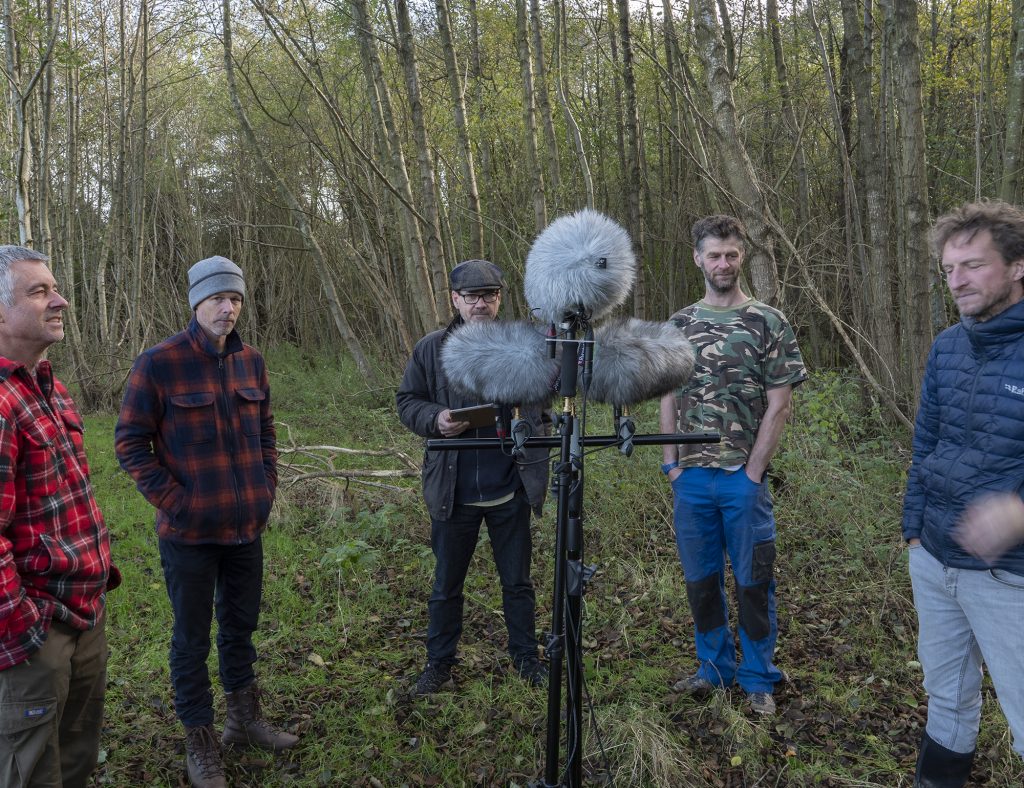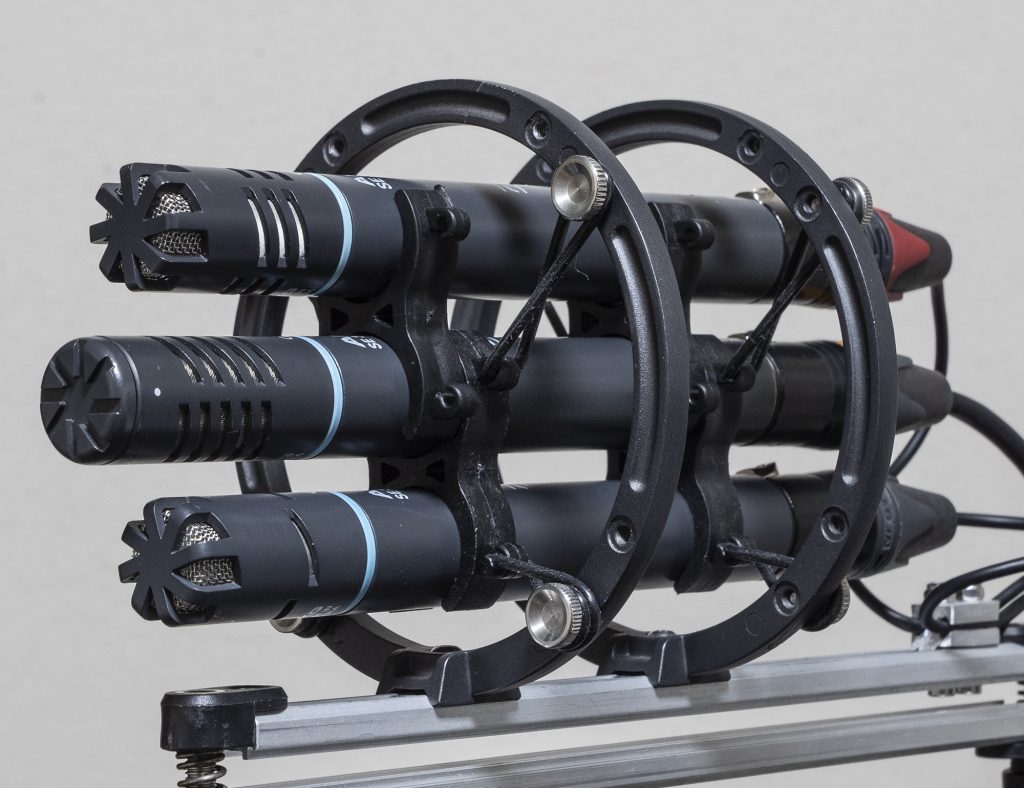
Last weekend was blowy and autumnal here in Norfolk, so I had a bit of fun out in the wind with the Rycote shotgun mics that I have been testing, in this case with the new Rycote Nano Shield kits: the NS2-CA for the HC-15 short shotgun and the NS4-DB for the HC-22 medium shotgun. The Nano Shields are impressively light and small, even if the deliberately bendy (but resilient) structure seems a bit unfamiliar to start with.
First up, I simply stuck the mics in the garden of this quiet village, facing the road, so you can hear the sounds of wind in the trees, passing cars, and the odd actual shotgun going off. With no low-cut switches on either mic, the 80 Hz switchable low-cut filter on the XLR connector seemed useful so here is the HC-15 with no low-cut (or high-pass) filter:
And here is a recording made at the same time, but with the HC-22 and its low-cut filter switched on:
OK, there could be a difference between the two mics or the effect of the different sizes of their Nano Shields, so here’s the test reversed. First, the HC-15 with its low-cut filter switched on:
And then the HC-22 with no low-cut filter:
So the verdict: in high winds the Nano Shield 80Hz low-cut filter is effective, especially with mics such as Rycote’s own ones with no in-built filters. Evidently the new windshields and mics were considered together. There’s no sense that the wind is overloading the mic to the degree that the low-cut filter is too far down the chain to be effective. Of course, this means that you can apply a low-cut filter at the preamp stage: how good this is will depend on your preamp/recorder, but I found no discernible difference when using my Sound Devices MixPre-3 80Hz low-cut filter. This doesn’t mean that there is no value in having a low-cut filter at the Nano Shield stage since in severe wind conditions you can double up: e.g. set the MixPre-3 low-cut filter (perhaps to say 40Hz) and apply the Rycote 80Hz low-cut filter too.
While doing various tests in the garden, out of idle curiosity I also set the two shotgun mics up as a NOS pair (capsules at 30cm spacing, angled out to 90 degrees between the mics). Despite being manifestly different mics, the identical capsule and preamps mean that it works surprisingly well. If nothing else, it’s a demonstration of how well the two mics match if cutting from one to the other. Sorry about the rather theatrical footsteps stamping past at one point!

Off then to the woods to test the mics in wind on something different. Perhaps it’s just me, but the woods around north Norfolk in early November seem pretty dead in terms of sound apart from wind (maybe I simply lack the patience to lurk about for hours like a real wildlife sound recordist?), so for a bit of acoustic interest I persuaded Norfolk’s raucous folk band, Rattlebox, to do some unaccompanied singing (Dick Shannon’s ‘The Auld Triangle’): this was also for my tests on double mid-side recording with two forward-facing mics, for which see my separate post. Anyway, in terms of the Rycote mics, here’s a rather unfair test of the HC-15, pointing into a semicircle of singers – fine for the lead vocalist, but, as intended with a shotgun mic, rejecting much of the other singers in the choruses that were more side-on to the mic:
Combining with an AKG CK94 for a mid-side pair changes things rather, as you’d expect. The HC-15 works rather well in this manner:
Finally, returning to the stereo experiment in the garden (above), I set up the HC-15 and HC-22 as a NOS pair (as shown in the photo above – which also shows a double mid-side rig in a Rode blimp), with the following result:
Again, I’m not recommending mixing a short and a medium shotgun as a stereo pair, but it’s not bad.
So the final word on the wind tests? Well, needless to say these were much more extensive than shown in this short post, but it is clear that the Rycote mics handle themselves fine in windy conditions. The Nano Shields – which I haven’t reviewed as such – are a good match and their performance belies their small size and light weight. Finally, and rather incidentally, those slightly tongue-in-cheek NOS stereo pair tests with the two different mics confirm both that the off-axis sound is rather good, and that the two different mics match very well.


